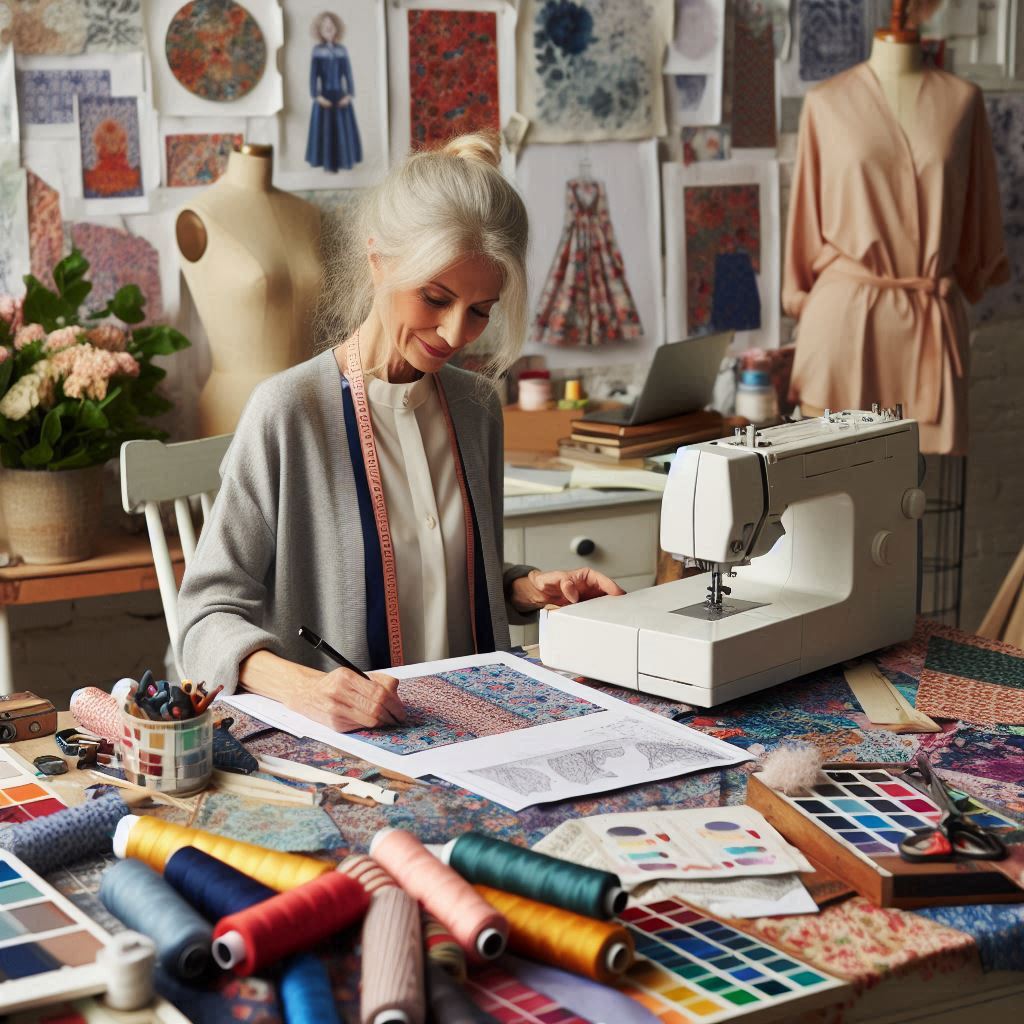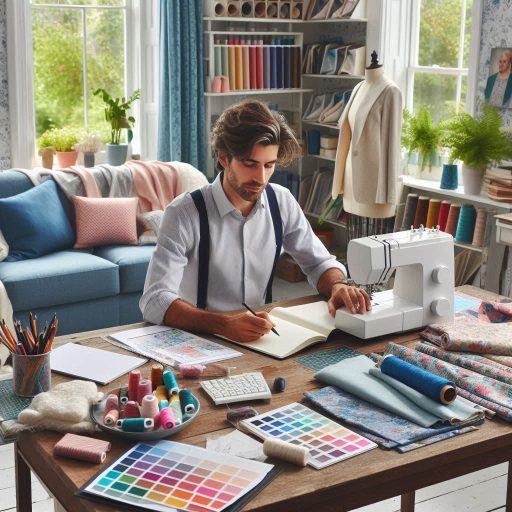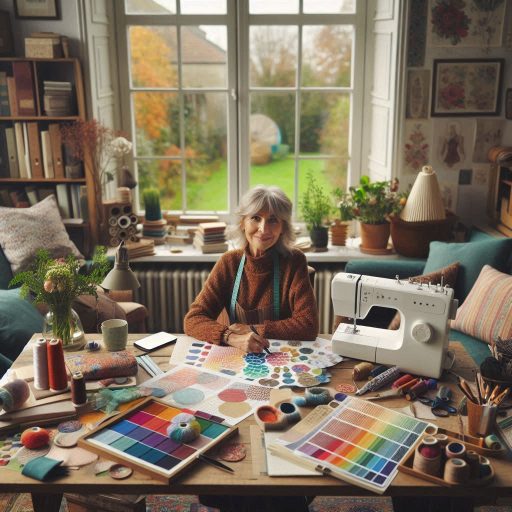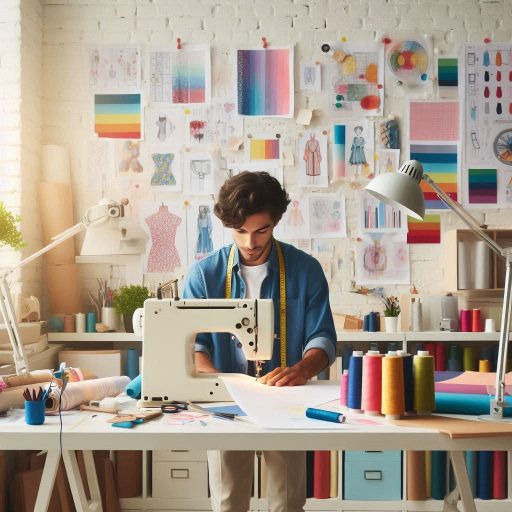Introduction
Textile designers play a crucial role in the fashion industry, shaping the visual identity of collections through their fabric innovations in textile Designer Fashion Week.
They create unique textiles that inspire designers and brands, influencing colors, patterns, and textures in clothing lines.
Their work encompasses everything from selecting materials to developing intricate prints, ensuring that each fabric tells a story.
Fashion week serves as a significant platform for textile designers, showcasing their innovative designs to a global audience.
During these high-profile events, designers present their fabrics to leading fashion houses and potential buyers, gaining invaluable exposure.
Fashion week allows textile designers to network with industry professionals, forging connections that can lead to exciting collaborations.
Moreover, these events offer designers the opportunity to gauge market trends and consumer preferences.
By observing runway presentations and attendee reactions, they can refine their future collections.
Overall, fashion week is essential for textile designers to gain visibility and recognition in the competitive fashion landscape.
Their participation helps to highlight the importance of textiles in the evolution of fashion, ensuring that their creative contributions are celebrated and appreciated.
Preparing for Fashion Week
Fashion Week is an exciting opportunity for textile designers.
Proper preparation can make a significant impact.
Here‘s how to get ready.
Researching the latest trends in textiles and fashion
- Stay Informed: Follow fashion magazines and websites.
They provide insights into current trends. - Attend Trade Shows: Visit textile and fashion trade shows.
Observe emerging patterns and materials. - Utilize Social Media: Follow influencers and designers on platforms like Instagram.
They often showcase the latest styles. - Analyze Color Palettes: Review color forecasts from companies like Pantone.
This helps you understand popular color trends. - Study Market Reports: Look for reports on consumer preferences and buying behaviors.
These reports guide your design decisions.
Collaborating with fashion designers and stylists
- Build Relationships: Network with designers and stylists.
Attend industry events to make connections. - Present Your Ideas: Share your textile concepts with designers.
Use mood boards to illustrate your vision. - Be Open to Feedback: Listen to their suggestions.
Constructive criticism can enhance your designs. - Align Your Styles: Ensure your textile designs complement their collections.
Collaboration should enhance the overall aesthetic. - Create Prototype Samples: Develop samples based on collaborative ideas.
These samples showcase your textiles in action.
Creating a collection that showcases unique textile designs
- Define Your Theme: Choose a cohesive theme for your collection.
This helps maintain focus and unity. - Select Unique Textiles: Source innovative materials that reflect your style.
Experiment with textures and patterns. - Develop Signature Pieces: Create standout pieces that highlight your textile designs.
These should capture attention on the runway. - Consider Functionality: Ensure your designs are not only beautiful but also wearable.
Functionality is key for designers and consumers. - Plan Your Presentation: Think about how to display your collection.
Visual impact is crucial during Fashion Week.
Final Touches
- Prepare Your Lookbook: Create a lookbook showcasing your collection.
Include high-quality images and descriptions. - Plan Your Marketing Strategy: Use social media to promote your collection.
Engage with followers to build anticipation. - Practice Your Pitch: Be ready to discuss your designs.
Your enthusiasm can make a lasting impression. - Stay Organized: Keep track of timelines and deadlines.
Being organized reduces stress during the hectic Fashion Week.
By following these steps, you will be well-prepared for Fashion Week.
Embrace the process and showcase your unique textile designs confidently!
Read: Top Skills Needed for Art Educators and Instructors
Showcasing at Fashion Week
Setting up a booth or display at the fashion week venue
As a textile designer showcasing at Fashion Week, it’s crucial to create a visually appealing booth or display.
Your setup should reflect your brand and design aesthetic.
Invest in high-quality displays and materials to showcase your work in the best possible light.
Consider the layout of your booth.
Make sure your designs are easily accessible and visible to potential clients and buyers.
Create a welcoming atmosphere that encourages people to approach and engage with your work.
Don’t forget to incorporate branding elements into your booth.
This can include signage, business cards, and promotional materials that help convey your brand identity.
Make sure your booth is cohesive and reflects your unique style as a designer.
Presenting the textile designs to potential clients and buyers
When presenting your textile designs at Fashion Week, focus on highlighting the unique features and quality of your work.
Be prepared to answer questions about your design process, inspiration, and materials used.
Offer information about the sustainability and ethical practices behind your designs.
Many consumers are increasingly interested in supporting brands that prioritize environmental and social responsibility.
Use this opportunity to educate potential clients about the value of your work.
Engage with visitors to your booth by explaining the story behind each design.
Share your creative process and the craftsmanship that goes into creating each piece.
Creating a personal connection with clients can help build loyalty and trust in your brand.
Networking with other industry professionals
Fashion Week is a prime opportunity to network with other industry professionals, from designers to buyers to stylists.
Build relationships with key players in the fashion world who can help elevate your brand and expand your reach.
Attend networking events and parties during Fashion Week to meet new contacts and establish connections.
Be proactive in introducing yourself and your work to others.
Don’t be afraid to follow up after the event to continue building relationships.
Collaborate with other designers or brands to expand your creative opportunities.
Partnering with like-minded professionals can help you reach new audiences and create exciting new projects.
Look for opportunities to collaborate on collections, events, or other creative ventures.
Read: Collaborating with Other Creative Roles
Attending Fashion Week Events
Attending Fashion Week offers textile designers a unique opportunity to immerse themselves in the latest trends.
Here are three key ways to make the most of this experience.
Attending runway shows to gain inspiration
Runway shows showcase the latest collections from top designers.
Watching these shows provides instant inspiration for your own designs.
Here‘s how to maximize your experience:
- Observe Trends: Pay attention to colors, patterns, and materials.
Note recurring themes and innovative uses of textiles. - Take Notes: Document your thoughts immediately after each show.
Highlight ideas that resonate with your design vision. - Analyze Styling: Study how garments are styled on the runway.
Consider how different fabrics work together to create visual impact.
Participating in industry seminars and workshops
Fashion Week is not just about runway shows; it also features seminars and workshops.
These events offer invaluable knowledge and networking opportunities.
Here‘s how to engage effectively:
- Choose Relevant Topics: Look for seminars that align with your interests, such as sustainable textiles or digital design techniques.
- Ask Questions: Participate actively by asking questions.
This can deepen your understanding and spark insightful discussions. - Take Detailed Notes: Capture key points, techniques, and tips from industry experts.
This information can inform your design process.
Building relationships with fashion influencers and journalists
Networking is a crucial aspect of attending Fashion Week.
Building relationships with influencers and journalists can elevate your profile in the industry.
Consider these strategies:
- Introduce Yourself: Approach influencers and journalists confidently.
A simple introduction can open doors to future collaborations. - Follow Up: After meeting someone, follow up with a personalized message.
Express your appreciation for their work and share your designs. - Engage on Social Media: Connect with influencers on platforms like Instagram or LinkedIn.
Comment on their posts to stay on their radar.
Attending Fashion Week events can significantly impact your career as a textile designer.
From gaining inspiration at runway shows to learning from industry seminars, every experience counts.
Building relationships with fashion influencers and journalists can open up new opportunities.
Embrace these experiences to grow your network and refine your design aesthetic.
Make the most of Fashion Week, and let it inspire your creative journey.
Read: Breaking Down Iconic Movie Costumes

Handling the Press
Navigating the world of fashion week can be exhilarating and overwhelming for textile designers.
Effective press handling is crucial for showcasing your designs.
Here‘s how to work with PR teams, secure interviews, and leverage social media.
Working with PR teams to promote the textile designs
Start by building a strong relationship with a public relations (PR) team.
Choose a team experienced in fashion and textile industries.
They can amplify your message and increase your visibility.
Share your design concepts and vision with the PR team.
They need to understand your brand and aesthetic.
Provide them with high-quality images and details about your collection.
This information helps them craft compelling press materials.
Engage in regular meetings with the PR team.
Discuss upcoming events, press releases, and potential opportunities.
Open communication ensures everyone is aligned and working towards common goals.
Securing interviews with fashion publications and blogs
Target fashion publications that align with your design style.
Research their editorial calendars and focus areas.
This knowledge helps you tailor your pitches effectively.
Craft a compelling story around your collection.
Highlight the inspiration, techniques, and materials used.
Editors appreciate unique narratives that resonate with their audience.
When you secure an interview, prepare thoroughly.
Anticipate questions about your design process and inspirations.
Be authentic and passionate about your work.
This enthusiasm will engage the interviewer and their readers.
Follow up after the interview.
Thank the publication for the opportunity.
Express your excitement about their coverage of your work.
Utilizing social media to showcase the designs to a wider audience
Leverage social media platforms to showcase your designs.
Instagram, Facebook, and Pinterest are essential for visual storytelling.
Share high-quality images of your collections and behind-the-scenes content.
Engage with your audience through stories and posts.
Ask for feedback and encourage comments.
Respond promptly to inquiries and messages to build relationships.
Use relevant hashtags to reach a wider audience.
Research popular hashtags in the fashion and textile sectors.
This strategy increases the visibility of your posts.
Collaborate with influencers and bloggers.
Their established audiences can introduce your designs to new customers.
Ensure their style aligns with your brand for authentic partnerships.
Consider hosting live sessions on social media.
Share your design journey and discuss upcoming collections.
This approach creates a personal connection with your audience.
Handling the press effectively can elevate your presence during fashion week.
Collaborate with PR teams, secure valuable interviews, and utilize social media.
With these strategies, you‘ll successfully promote your textile designs to a broader audience.
Embrace the excitement and showcase your creativity!
Read: Visual Merchandising: Best Practices for Beginners
Gain More Insights: Day in the Life of a Professional Textile Designer
Transform Your Career Today
Unlock a personalized career strategy that drives real results. Get tailored advice and a roadmap designed just for you.
Start NowPost-Fashion Week
Fashion Week presents an exciting opportunity for textile designers.
However, the work doesn‘t stop when the event ends.
Follow these essential steps to maximize your impact after Fashion Week.
Follow Up with Potential Clients and Buyers
After Fashion Week, reaching out to potential clients and buyers is crucial.
Here‘s how to effectively follow up:
- Send Thank-You Notes: Express gratitude to those who visited your showcase.
A personalized message can leave a lasting impression. - Share Digital Lookbooks: Create a digital lookbook featuring your best designs.
This allows clients to revisit your collection at their convenience. - Schedule Meetings: Propose meetings or calls to discuss potential collaborations.
Use this time to showcase your vision and discuss how your textiles can fit their needs. - Utilize Social Media: Engage with clients through social media.
Share highlights from Fashion Week and tag potential buyers to keep the conversation alive.
Analyzing feedback and reviews from fashion week
Gathering feedback is essential for improvement.
Here‘s how to analyze insights effectively:
- Collect Feedback: Reach out to attendees for their thoughts on your collection.
Use surveys or direct messages to gather honest opinions. - Identify Common Themes: Look for recurring comments or suggestions.
This will help you pinpoint strengths and weaknesses in your designs. - Review Social Media Engagement: Analyze comments, likes, and shares on your posts.
High engagement indicates designs that resonate with your audience. - Consult with Industry Peers: Discuss your collection with fellow designers or mentors.
They may offer valuable perspectives that can help refine your work.
Planning future collections and projects based on the response at fashion week
Using the insights gained, it‘s time to plan your next steps.
Consider the following:
- Evaluate Trends: Analyze the overall trends from Fashion Week.
Incorporate successful elements into your upcoming collections. - Set Clear Goals: Establish specific objectives for your next collection.
Consider market demands, seasonal themes, and your unique design style. - Experiment with New Ideas: Don‘t be afraid to innovate.
Use feedback to inspire fresh concepts and techniques in your textiles. - Create a Timeline: Develop a timeline for your next collection.
This should include deadlines for design, production, and marketing efforts. - Budget Wisely: Plan your budget carefully.
Allocate resources for materials, marketing, and any collaborations you may pursue.
Post-Fashion Week is a critical time for textile designers.
By following up with clients, analyzing feedback, and planning future projects, you can build on the momentum gained during the event.
Embrace this phase as an opportunity to grow and evolve in your craft.
Your next collection could be your best yet!
Explore Further: Famous Typographers: Pioneers of Modern Typography
Conclusion
Attending Fashion Week offers invaluable opportunities for textile designers.
This event serves as a vibrant platform to showcase your creativity and innovation.
Networking is crucial; it helps you build connections with industry professionals.
Engage actively with fellow designers, buyers, and influencers to expand your reach and visibility.
Creativity drives the fashion industry.
It‘s essential to showcase your unique designs and innovative textiles to stand out.
Experiment with new materials and techniques that can inspire others and spark conversations.
Your creative vision can set trends and captivate audiences.
Professionalism cannot be overlooked in this fast-paced environment.
Arrive on time and be thoroughly prepared for every meeting or event.
Present yourself confidently and maintain a positive attitude throughout.
Following up with contacts after the event is vital for nurturing relationships.
By embracing these key takeaways, you position yourself for success.
Fashion Week serves as a launching pad for your brand and network.
The right connections can lead to exciting collaborations and opportunities.
Stay focused, be creative, and always act professionally to thrive in this competitive industry.
Your dedication and effort will pave the way for a successful career in textile design.
[E-Books for Sale]
The Big Book of 500 High-Paying Jobs in America: Unlock Your Earning Potential
$19.99 • 500 High-Paying Jobs • 330 pages
Explore 500 high-paying jobs in America and learn how to boost your career, earn more, and achieve success!
See All 500 High-Paying Jobs of this E-Book
1001 Professions Without a Degree: High-Paying American Jobs You Can Start Now
$19.99 • 1001 Professions Without a Degree • 174 pages
Discover 1001 high-paying jobs without a degree! Unlock career tips, skills, and success strategies for just $19.99!




